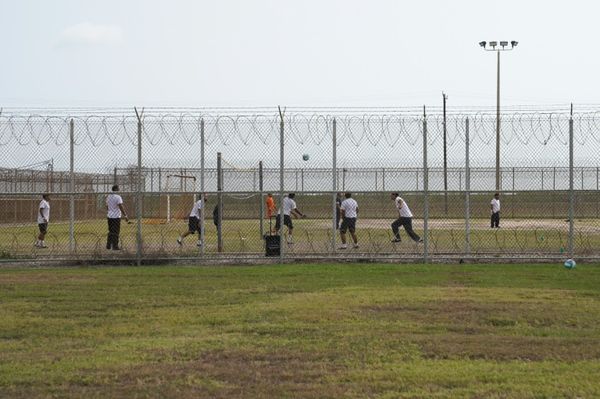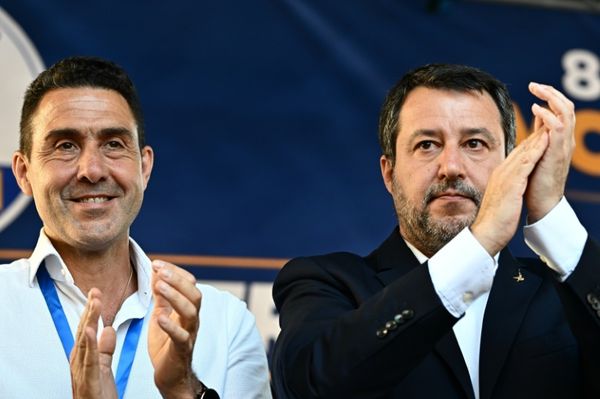
Welcome to FTW Explains, a guide to catching up on and better understanding stuff going on in the world. Are you livid over a college football targeting call or don’t quite understand the penalty? If so, we’re here to help.
It’s no secret that one of college football’s most controversial rules — maybe THE most controversial rule — is targeting, which, if called, results in the ejection of the player who committed the foul.
Some fans hate the rule entirely, some want adjustments made to the rule and others simply just don’t understand what exactly targeting is in college football.
There are essentially two variations of targeting: one that focuses on the crown of a player’s helmet and one that focuses on a defenseless player. We’ll break down both.
As the NCAA continues regularly updating its rulebook, keeping track of what is targeting and the details of that penalty can be challenging. That’s OK because we’re simplifying it and breaking it all down.
What is targeting in college football?

The NCAA’s targeting rule prohibits players from initiating forcible contact against an opponent that “goes beyond making a legal tackle or a legal block or playing the ball.”
That could mean leading with the crown of the helmet while making forcible contact or making forcible contact to the head or neck area of a defenseless opponent with the helmet, shoulder, arm or hand.
Beginning with the 2022 season, the rulebook’s definition of “crown of the helmet” was updated to more precisely focus on the top of the helmet and is now defined as “the top segment of the helmet; namely, the circular area defined by a 6-inch radius from the apex (top) of the helmet.”
If a player leads with the crown of his helmet, it’s targeting whether or not the player is defenseless.
When it’s in question, it’s ruled a foul. However, there still needs to be at least one indicator of targeting.
This was called targeting and the DB was ejected from the game
Do you agree with the call?pic.twitter.com/NQrfggzESW
— Spark College Football (@SparkCFB) December 18, 2023
OK, so then what are the indicators of targeting?

For a targeting penalty, there needs to be an indicator of targeting, as opposed to uninitiated contact or when contact was unavoidable.
Although these are not all the indicators of targeting, here are four key ones defined by the NCAA rulebook:
- Launch — a player leaving his feet to attack an opponent by an upward and forward thrust of the body to make forcible contact in the head or neck area
- A crouch followed by an upward and forward thrust to attack with forcible contact at the head or neck area, even though one or both feet are still on the ground
- Leading with helmet, shoulder, forearm, fist, hand or elbow to attack with forcible contact at the head or neck area
- Lowering the head before attacking by initiating forcible contact with the crown of the helmet
#10 got elbowed in the face by his teammate then took another hit to the helmet by the defender (called & ejected for targeting) 😭😭 pic.twitter.com/xZJnbDkKMA
— Video from: @TSV__1 (@TSV__1) December 22, 2023
How is a defenseless player defined when it comes to college football targeting calls?

Of course, there’s more to targeting than a player making forcible contact with the crown of his own helmet. And this part is focused as much about the player committing targeting as the one on the receiving end of the tackle.
As we mentioned, if a player initiates forcible contact with the crown of the helmet, it doesn’t matter if the player is defenseless or not.
However, if a player is defenseless, you can’t initiate contact above the shoulders, even if you don’t lead with the crown.
Players are also prohibited from targeting and making forcible contact to the head or neck area of a defenseless player with the helmet, forearm, hand, fist, elbow or shoulder.
And when dealing with a defenseless player — and when in question, the player is defenseless — there still needs to be at least one indicator of targeting. Some of the NCAA’s examples of a defenseless player include:
- A player in the act of or just after throwing a pass, and that includes “an offensive player in a passing posture with a focus downfield”
- A player attempted to catch a forward or backward pass, or a player who has completed the catch but hasn’t had time to protect himself or hasn’t clearly become the ball-carrier yet
- A kicker in the act of kicking or just after kicking the ball
- A player on the ground
- A player who receives a blind-side block
- A player with the ball who is already in the grasp of an opponent and whose forward progress has been stopped
- A quarterback any time after a change of possession
- A ball-carrier purposely sliding feet first
These rules are designed to protect both the player being hit, as well as the one doing the targeting. Basically, don’t lead with the crown of your helmet when making any kind of tackle, and don’t go after a player’s head or neck area.
James Skalski was called for targeting and ejected after this hit on Justin Fields. pic.twitter.com/0oqTQCTEDi
— ESPN (@espn) January 2, 2021
What is the penalty for targeting in college football?

This is where things really get controversial with the targeting rule.
If the refs determine a player committed a targeting foul, that player is ejected from the game, and the opposing team gets 15 yards. But here’s a crucial part: The disqualification must be reviewed. And again, when in doubt, it’s targeting.
If a player is disqualified for a targeting penalty in the first half, he’s out for the rest of the game. If he’s flagged for targeting in the second half, he’s out for the rest of the game and the first half of the next game. If it happens in the second half of the last game of the season and is still eligible to play the following season (and does), the suspension will be served in the first game of the next season.
And if one player commits three targeting fouls in the same season, he will receive an automatic one-game suspension in the next scheduled matchup.
A few years ago, the NCAA made a slight change to what happens to an ejected player. Since 2013, players disqualified for targeting were required to go to the locker room. However, ahead of the 2020 season, the NCAA said players ejected for targeting don’t have to leave the sideline and can remain in the team area.
The NCAA made a critical change last season: Beginning in 2022, an appeals process was established for players who receive targeting penalties in the second half of a game, which would impact the player’s next game with the team, whether that’s in the same season or the next one.
If a player is ejected for targeting in the second half of the game, they and their conference can appeal it to the national coordinator of football officials, who would then review it. Per the rulebook:
“Based on the review, if and only if the national coordinator concludes that is is clearly obvious the player should not have been disqualified, the suspension will be vacated. If the national coordinator supports the disqualification, the suspension for the next game will remain.”
But really, does any of this make targeting less controversial? No, probably not.







